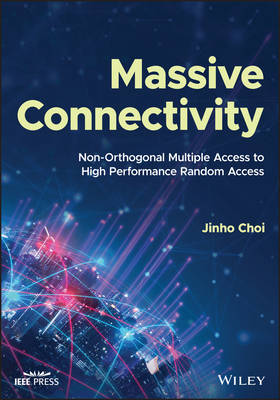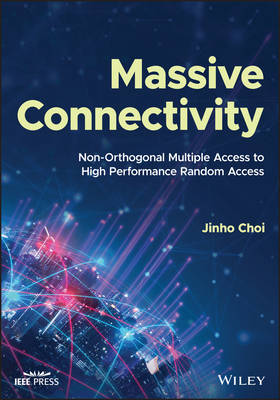
- Retrait gratuit dans votre magasin Club
- 7.000.000 titres dans notre catalogue
- Payer en toute sécurité
- Toujours un magasin près de chez vous
- Retrait gratuit dans votre magasin Club
- 7.000.000 titres dans notre catalogue
- Payer en toute sécurité
- Toujours un magasin près de chez vous
Description
Learn to support more devices and sensors in Internet of Things applications through NOMA and machine-type communication
Non-orthogonal multiple access (NOMA) has held much interest due to its ability to provide a higher spectral efficiency--such as more bits per unit bandwidth in Hertz--than other, orthogonal multiple access schemes. The majority of this research focuses on the application of NOMA to downlink channels (from base station to users) in cellular systems as its use for uplink (users to base station) is somewhat circumscribed. However, NOMA has recently been employed in contention-based uplink access, which has shown an improvement in performance that allows an increase in the number of users that can be supported. As a result, NOMA is promising for machine-type communication (MTC) in 5G systems and beyond, making it a key enabler of the Internet of Things (IoT).
Massive Connectivity provides an in-depth, comprehensive view of the benefits and drawbacks of uplink NOMA random access (RA) systems. This text offers a basic introduction and description of uplink NOMA RA systems before considering the possibilities for evolution of the scheme as attempts are made to derive the most benefits and overcome any weaknesses. The book further presents key performance analysis while also highlighting game-theoretic views. In essence, by describing the essential properties of stable and high-throughput yielding RA systems, the book demonstrates that uplink NOMA can fulfill these required properties.
Massive Connectivity readers will also find:
- An extensive literature survey on RA systems and their applications since the 1970s
- Recent advances in random access for massive connectivity
- Retransmission control algorithms for NOMA random access
- Discussion of how uplink NOMA random access systems can be integrated into the existing long-term evolution (LTE) or upcoming 5G cellular networks
Massive Connectivity is a useful reference for field engineers and academics, as well as experts for random access systems for IoT applications.
Spécifications
Parties prenantes
- Auteur(s) :
- Editeur:
Contenu
- Nombre de pages :
- 192
- Langue:
- Anglais
- Collection :
Caractéristiques
- EAN:
- 9781119772774
- Date de parution :
- 02-08-22
- Format:
- Livre relié
- Format numérique:
- Genaaid
- Dimensions :
- 152 mm x 229 mm
- Poids :
- 426 g







